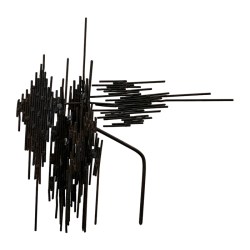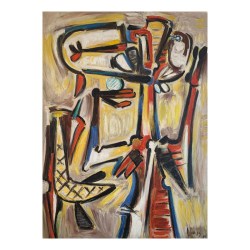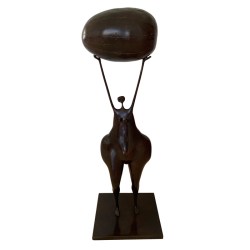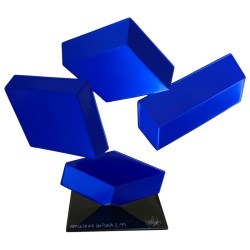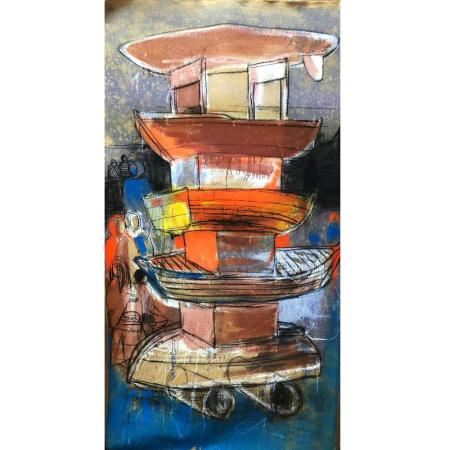Latin American Masters: KCHO
de la serie ‘Columna Infinita’
83.5 x 48.0 in.
2019
Certified by KCHO
Signature on the lower-left corner
Kcho
Alexis Leyva Machado (Isla de la Juventud, Cuba, 1970), known in the art world as Kcho, is part of a generation of young artists that, following in the wake of Cuban avant-garde tradition from the Twenties, develop their work by regenerating their commitment to the formal and conceptual concerns of contemporary art. His work, essentially poetic and imbued with landscape and Cuban popular culture, forges a reflection on travel and the environment, on the continual evolution of time and matter.
Kcho's work has evolved since his first sculptures at the beginning of the Nineties, fashioned with woven branches, towards large-scale montages in installations, for instance the piece presented in the Arsenale at the Venice Biennale in 1999. His work gains significant international exposure after being included in the Havana Biennale in 1994, the year he also participates in the Cocido y crudo (Cooked and Raw) exhibition held in the Museo Nacional Centro de Arte Reina Sofía.
The Cuban artist also frequently uses objects found in his journeys along the seashore and the streets of Havana - pieces of wood, rope, clothes, glass - that he works with and assembles to create his sculptures. The handcrafted nature of his pieces is a key component and refer to the culture of recycling whereby everything has various uses that differ from the one they were originally intended for.
The notion that nothing is permanent and everything transforms the present is ubiquitous throughout his work. The piece A los ojos de la historia (1995), a reworking of Vladimir Tatlin's Monument to the Third International, remains, along with his model, a metaphor for utopia, for architecture with no use.
SOURCE: Museo Reina Sofía
Available Artworks
Can’t find what you’re looking for?
We have access to a wide range of art collections to meet your requirements, ranging from Venezuelan & Latin American to international masters.
Contact us at +1 305 907-9960 regarding the artist you’re looking for; we’ll search and find it for you.
Starting your art collection
When starting a collection one must consider a variety of factors. First however, one must start by asking – why and how will I start to collect art?


